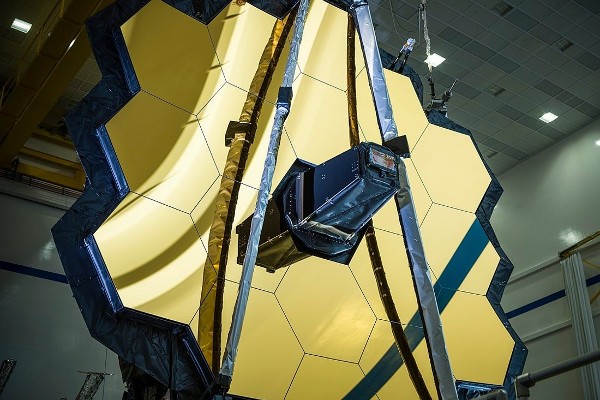
Source: Brian Rodgers, Enterprise Ireland delegate to the European Space Agency, published in the Sunday Independent on 9 January.
Irish eyes were focused on the skies on Christmas Eve, not in the hope of spotting Santa or a stray reindeer, but rather at one of the biggest space launches in recent years – the launch of the James Webb Space Telescope (JWST, or simply Webb), the next great space science observatory following the famous Hubble Telescope. The Webb telescope will now reside one-and-a-half million kilometres from Earth, hovering in line with our planet as it orbits the Sun.
Over 25 years in development, the Webb telescope aims to answer more questions about the development of the Universe than ever before, with the ability to look back 13.5 billion years in time to observe the birth of the first galaxies and the lifecycle of stars and exoplanets. This major breakthrough is the result of an international project led by NASA with its partners the European Space Agency (ESA) and the Canadian Space Agency (CSA) – with two Irish companies and an Irish research institute playing significant roles in the development of the Webb’s scientific instruments and in its launch into space.
Webb follows the NASA/ESA Hubble Space Telescope in the line of great space observatories. Both have different scientific capabilities and will operate in parallel, complementing each other, for several years.
In fact, the Webb has the capacity to do far more than the Hubble, as it has over six times the light-gathering capacity and is a hundred times more sensitive, with the ability to peer through clouds of dust by capturing light in the infrared part of the spectrum. By looking back to the early Universe using infrared detectors, Webb hopes to answer some vital questions about the formation of our Universe, the make-up of so-called dark matter, and how the development of galaxies can tell us about the future of the Universe.
There was significant Irish input into the development of the infrared detector technology. Professor Tom Ray of the Dublin Institute for Advanced Studies (DIAS) was Co-Principal Investigator for the Mid-InfraRed Instrument (MIRI) on Webb, which will produce images and spectra with unprecedented sharpness and sensitivity. Professor Ray and his team from DIAS also provided MIRI’s infrared filters, which break up the light into its various components, and imaging software that will analyse the instrument data sent back to Earth and produce scientific images.
Upon completion, Webb was carefully transported to ESA’s spaceport in Kourou, French Guiana, where it was launched on Christmas Day on an Ariane 5 launcher. Here, an Irish company played a major role: Réaltra Space Systems Engineering designed and manufactured the video imaging system onboard the Ariane 5 launch vehicle, which gave us impressive high-definition video images of the separation of the launcher’s fairing and separation of the telescope itself. The final images of Webb moving into space on Christmas Day came from Réaltra’s technology. Interestingly, Réaltra’s system was originally designed for the Ariane 6 launch vehicle, which is due its first flight in the second half of 2022.
A second Irish company, Nammo Ireland, provided structural supports for the Vulcain engine that powers Ariane 5 – and will be involved in producing components for both the Vulcain and Vinci engines on the new Ariane 6 launch vehicle.
The vital roles played by these Irish entities in the development of this huge space project were enabled by Ireland’s membership of ESA, which is managed through the Department of Enterprise, Trade and Employment. Enterprise Ireland supports and guides Irish companies and research institutes in developing technologies through ESA programmes, and in commercialising these technologies in the worldwide space market, with over 100 companies supported to date.
The success of these companies in this ground-breaking project underlines the growth in opportunities in the commercial space market for innovative Irish companies with exciting technologies that can also be used in many different sectors, such as automotive and medical. These opportunities will only become more plentiful as our understanding of space grows and develops – and we are confident more Irish companies will be involved in such thrilling projects in the future.
Full article can be found here in the Irish Independent.
